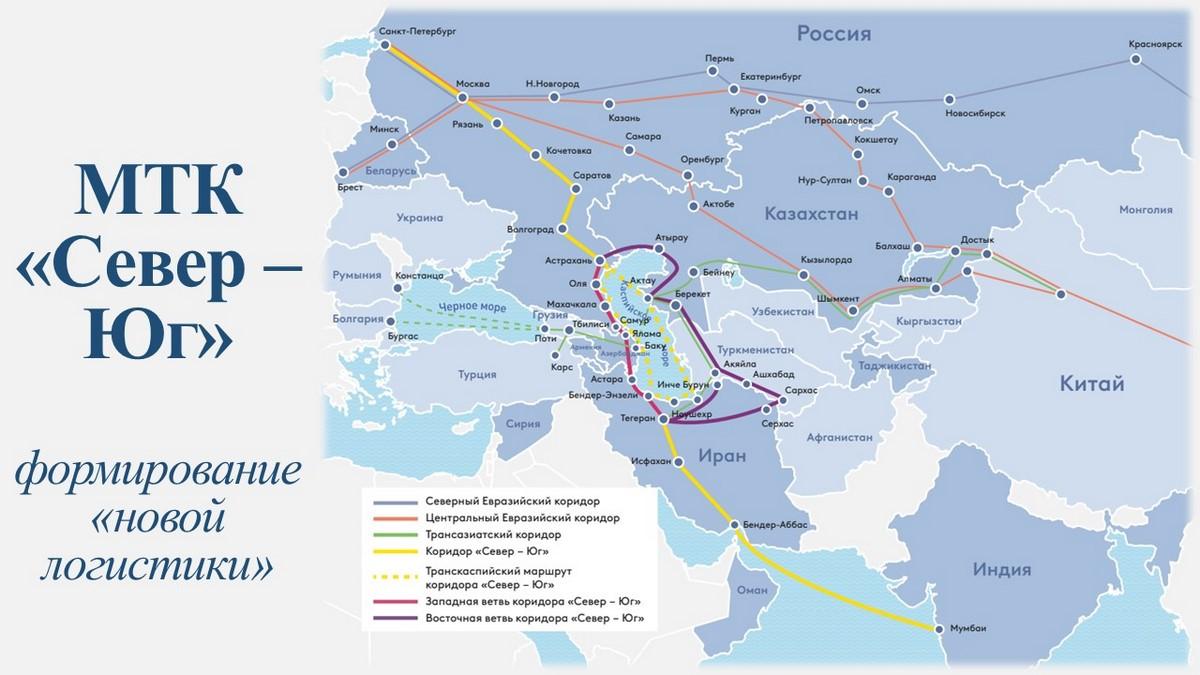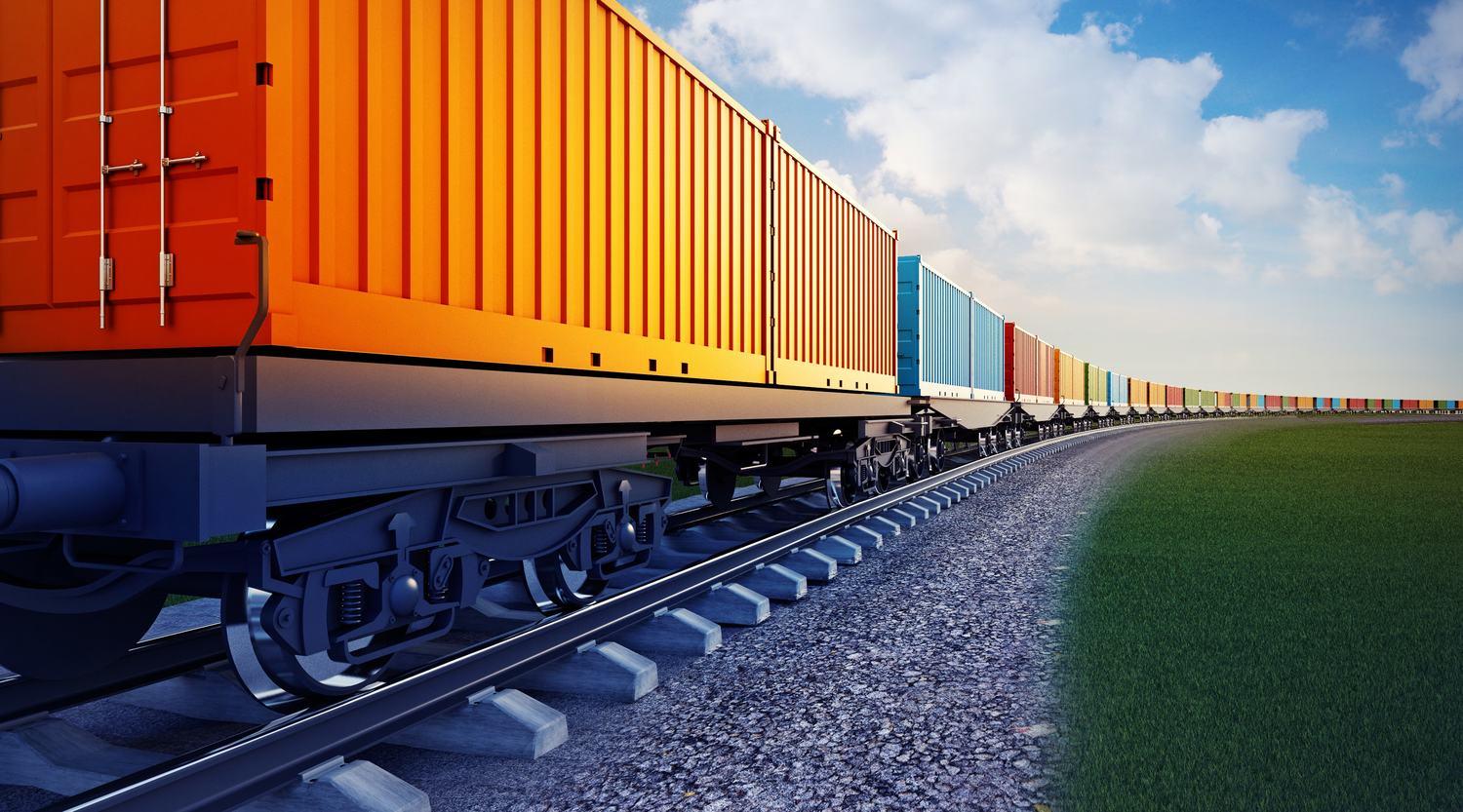North-South Transport Corridor in full swing Russia, Iran, Azerbaijan synchronize efforts
The process of forming the international transport corridor (ITC) "North-South" is gradually nearing its final stages. During the recent St. Petersburg International Economic Forum (SPIEF), sequential steps were discussed within the agreements reached last May regarding the establishment of railway infrastructure on the Iranian segment of the corridor, alongside plans to expand transit freight transportation through Azerbaijan.
Just days ago in Derbent (Republic of Dagestan, Russia), experts from Russia, Iran, and Azerbaijan convened, agreeing to establish a new working group aimed at developing freight transport along the "North-South" corridor.
The "North-South" ITC is a multimodal transport corridor stretching 7,200 kilometers from St. Petersburg to the port of Mumbai in India. There are three route options for this corridor. One is the Trans-Caspian maritime route using railways, which connects Russian ports (Astrakhan, Olya) and Iranian ports (Anzali, Bandar Abbas) on the Caspian Sea. There are also two overland routes: the longer (2,500 km) eastern route transiting through Central Asian countries towards Iran, and the significantly shorter (1,450 km) western route with a land transfer through Azerbaijan.
"The shipment of cargo along the North-South route through the entire European part of Russia to Azerbaijan, then to Iran, can turn into a very good and in-demand international corridor, which will reduce transportation time to the Persian Gulf countries by up to 10 days," Russian President Vladimir Putin said recently.

Let's remind that more than a year ago, there was a crucial turning point in the implementation of this project: on May 17, 2023, the heads of the transport departments of Russia and Iran signed an agreement on joint financing, design, and construction of a 170-kilometer railway section from Rasht to Astara. According to the agreements, Russia's share in the intergovernmental loan for this project will be 85 per cent.
Overall, Russia has expressed readiness to provide approximately $1.5 billion for expanding bottlenecks and modernizing the railway infrastructure of the North-South corridor on both Russian and Iranian territories. According to recent expert assessments, the total cost of laying the Rasht-Astara railway section is estimated at €1.6 billion, with Russia's portion of the intergovernmental loan to the Islamic Republic of Iran (IRI) estimated at approximately €1.3 billion.
"We hope that by June 2024, we will commence initial survey work on the Rasht-Astara railway section, sign an executive contract, and subsequently begin actual construction this year in parallel with the design process, with the aim of launching a continuous railway line by 2028," Deputy Minister of Transport of the Russian Federation Dmitry Zverev recently stated at the 15th International Economic Forum "Russia - Islamic World: KazanForum 2024".
It's worth noting that Azerbaijan plays a crucial role in the North-South corridor project and plans to complete all the necessary upgrades to its segment of the corridor by the expected launch of the Iranian Rasht-Astara section around 2028.
"Construction on the Baku-Astara railway section is scheduled to commence next year," noted Rovshan Rustamov, Chairman of Azerbaijan Railways CJSC.
"The modernization of the railway infrastructure for the North-South project is being carried out within a special program: currently, with the assistance of a $400 million loan from the Asian Development Bank (ADB), the Baku-Yalama road section is undergoing reconstruction, which is planned to be completed in the first half of 2025,” he added.

In Azerbaijan, starting from 2017, a number of initiatives have already been implemented to develop the potential of the North-South Transport Corridor (NSTC). Specifically, railway tracks have been laid from the border town of Astara directly to the state border, a railway bridge has been constructed, as well as new terminals and border checkpoints, including the largest grain terminal in the region, AstaraGrainTerminal, with a capacity of 500 thousand tons of grain per year.
Additionally, about seven years ago, Azerbaijan leased 35 hectares of land in Iranian Astara for 25 years and built a terminal there. In May of this year, the reconstruction of the Astara Terminal in the Astara District of the Republic of Azerbaijan was completed: according to Azerbaijan Railways (ADY), the reconstruction of the terminal's cargo yard was successfully completed and customs control was organized on this territory.
One of the main advantages of the terminal is the application of preferential tariffs for cargo owners on the transportation and transshipment of received cargo. According to preliminary estimates, the commissioning of the Astara terminal will increase transit shipments along the North-South route by 10-15 per cent by the end of this year. In the future, by increasing the terminal's capacity, its transshipment capacity will increase from the current 1 million tons of cargo per year to 4 million tons at peak operation in shift mode.
Within the North-South project, ADY specialists are also completing repair works on the Sumgayit-Yalama railway section, including the complete modernization of the electrical infrastructure, implementation of optical communication, and installation of a modern signaling system.
In turn, the construction of the Yalama-2 station in Azerbaijan and the Samur-2 station on the Russian side of the border is planned at the Russian-Azerbaijani border. Thanks to these measures, in the next two years, Azerbaijan will be able to accept up to 15 million tons of cargo annually from Russia. For comparison, the existing Yalama railway station is capable of handling about 11 million tons of cargo annually. All of the above opens a “window of opportunity” for significantly expanding the railway cargo transshipment along the western route of the North-South corridor.
According to experts, when the Rasht-Astara railway section is launched, the capabilities of the North-South corridor for transit shipments will significantly increase. Thanks to the end-to-end railway connection there will be no need to transship cargoes from trains to road transport. It is expected that by 2030, the NSTC will be capable of transshipping up to 30 million tons of cargo, with a significant portion of this traffic allocated to the western route.

However, even today, due to the absence of through railway communication with Iran (due to the lack of rails on the Rasht-Astara section), Baku and Tehran efficiently utilize a combined rail-road transshipment scheme for transit cargo, with impressive dynamics in this segment. Cargo arriving from Russia by rail and to a large extent by road has been delivered since 2018 to the operational Astara terminal in Iran managed by the Azerbaijani company Astara Terminal LLC.
Part of the cargo is transferred to Iranian heavy trucks and then transported to recipients in Iranian cities or ports of the Persian Gulf. Within the framework of this hybrid rail-road transshipment, over 2.5 million tons of cargo was delivered from 2018 to 2023. During the reporting period, the annual volume of transshipped cargo increased more than threefold, from 211,789 tons in 2018 to 692,402 tons in 2023. It is noteworthy that in 2023, freight traffic in this direction increased by 48 per cent, and in the first four months of the current year, 284,688 tons of cargo were transshipped through the Astara terminal, marking a 14 per cent increase.
The successful development of this transit traffic has been facilitated, among other things, by the construction of modern highways in Azerbaijan and the expansion of border road infrastructure.
For instance, in 2018, the multi-lane high-speed highway Alyat-Astara-state border of Iran, with a length of 243 km, was put into operation, and last autumn, the new high-speed road Samur-Baku, 208 km long, was completed. Similar highway modernization work has been carried out on the border between Azerbaijani and Iranian Astara.
In turn, in 2019, a new automobile bridge Yalama-Gazmalar was commissioned at the Azerbaijan-Russian border over the Samur River and in the year before last, a new customs checkpoint (CCP) "Khanoba" (processing about 1000 trucks per day) and a modernized CCP "Shirvanli" for handling empty trucks began operating. Thanks to measures taken at the Azerbaijan-Russian border, there are no traffic jams today, and on the contrary, the volume of freight traffic is consistently increasing.
On June 16, during a round table in Derbent, 27 representatives of relevant authorities from Russia, Iran, and Azerbaijan agreed to establish a working group on expanding freight transportation within the NSTC North-South.
“We held a tripartite expert-level meeting in Derbent between the Russian, Azerbaijani, and Iranian delegations and familiarized ourselves with the potential of customs and border checkpoints, including 'Iranian Astara,' 'Azerbaijani Astara,' 'Southern Azerbaijani Astara,' as well as 'Tagirkent-Kazmalyar' and 'Yarag-Kazmalyar' in Russia,” said Andrey Tanayev, representative of the Dagestan government at the Trade Representation of the Russian Federation in Iran, emphasizing that the tripartite expert group meeting on cargo transportation issues took place for the first time in the past decade.
According to Tanayev, the meeting participants highly praised the process of arranging cross-border and customs procedures: “At the 'Yarag-Kazmalyar' checkpoint, everything is done on a single-window principle - documents are submitted, and within 30-40 minutes, they are prepared and provided to the driver who immediately crosses the border.”
The meeting also discussed opportunities for further simplification of transit procedures, tariff reduction, and attracting new cargo to the NSTC; these and other prospective tasks will be addressed by the new tripartite working group.








